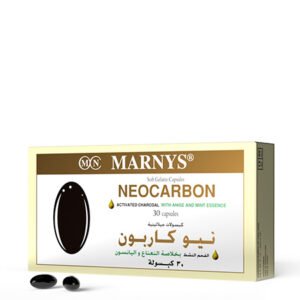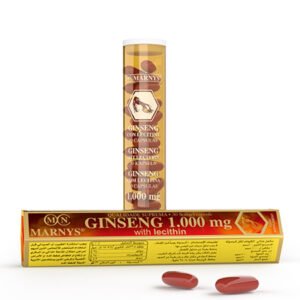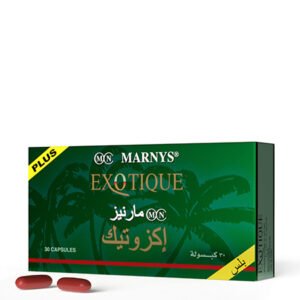What is niacin or vitamin b3?
Vitamin B3 or niacin is part of the complex of B vitamins, each of which has a different but complementary structure and function, promoting physical and mental well-being. Another name for this vitamin is factor PP (Preventice pellagra), since a deficiency in the supply of this vitamin or its precursor (tryptophan) leads to this condition, which is characterised by skin, digestive and nervous symptoms.
The term “niacin” is used to refer to all vitamin-active forms of vitamin B3. It is the generic name used for derivatives of this vitamin, such as nicotinic acid and its amide, nicotinamide (niacinamide). Vitamin B3 or niacin is a water-soluble vitamin that is rapidly absorbed by passive diffusion in the stomach and intestine and excess is excreted in the urine.
What is vitamin b3 used for?
In the body, it is involved in a multitude of oxidative metabolism reactions, for energy production, fatty acid synthesis and defence against oxidants. Several studies have shown clinical benefits in reducing cardiovascular events and the progression of atherosclerosis.
Properties of niacin
Among the health claims recognised by EFSA (European Food Safety Authority), niacin contributes to normal:
- Energy metabolism.
- Functioning of the nervous system.
- Physiological function.
- Maintenance of mucous membranes.
- Maintenance of the skin.
- Reduction of tiredness and fatigue.
Foods containing vitamin b3
Niacin is not only obtained from dietary nicotinic acid and nicotinamide, but is also synthesised in the body from the essential amino acid L-tryptophan (approximately 60 mg of L-trytophanyields 1 mg of niacin). The concept of mg niacin equivalents (NE) is used to refer to both the niacin that is consumed and the niacin that is produced by the body from tryptophan.
Because of the contribution of tryptophan, foods containing tryptophan are important contributors to total niacin equivalent intake. Lean red meat, poultry, liver, beef and fish contain high levels of niacin and tryptophan and, along with legumes and peanuts, are important sources of this vitamin. Cheese and eggs are relatively poor sources of niacin, but contain large amounts of tryptophan and therefore have a high niacin equivalent. Fruits and vegetables provide useful amounts, depending on dietary intake. Other sources are whole grains, tea and coffee.
What is niacinamide and how is it different from niacin?
Nicotinic acid and nicotinamide or niacinamide are forms of vitamin B3 collectively referred to as niacin. However, niacinamide or nicotinamide is the amide of nicotinic acid and the physiologically active form of vitamin B3 or niacin because it is found as a part of the coenzymes involved in the processes that provide the energy essential for the body’s daily functioning (in the form of adenosine triphosphate or ATP). Niacinamide is therefore the main form of vitamin B3 circulating in the blood.
Benefits of niacinamide on the skin
Niacinamide is found naturally in human cells and is a star ingredient for its benefits on skin hydration and structure. In cosmetics, niacin is also widely used for its recognised smoothing function by the European Commission (Cosing), i.e. it smoothes roughness or irregularities in the skin to make it even.
How does niacinamide act on the skin?
- Anti-ageing effect. Niacinamide acts positively on DNA repairs and facilitates the production of collagen and elastin, restoring the epithelial layers and exerting an anti-ageing action.
- Anti-pollution agent. It is an excellent anti-pollution agent due to its ability to safeguard cells from common air pollutants.
- Soothes and calms the skin. Niacinamide has been shown to exert a soothing effect through its antioxidant properties on cells and stimulating the production of lipids and other structural proteins.
- Moisturises and strengthens. Stimulates the production of ceramides in the skin and supports the skin’s ability to retain moisture, benefiting the skin barrier.
- Improves the appearance of enlarged pores. Facilitates the reduction of pore size and maintains a hydrated complexion.
- Regulates and mattifies the impurities of oily skin. Normalises skin sebum production, useful for oily skin.
- Evens out skin tone and improves the photo-aged appearance. Acts as a modulator of hyperpigmentation and has anti-ageing properties.
Niacinamide and vitamin C
The combination of these two ingredients favours the antioxidant effect, improves the appearance of photoaged skin and weakens the appearance of blemishes. It is therefore a combination of ingredients widely used in depigmenting and tone-levelling cosmetics, as indicated in the previous section.
- Fernández Falcón, Lizet de la C. et al. Niacina. Aspectos esenciales. Rev Inf Cient. 2015; 90(2):401‐414
- Langman, M. Safe Upper Levels for Vitamins and Minerals. Expert Group on Vitamins and Minerals, May 2003. Published by Food Standards Agency. ISBN 1-904026-11-7.
- Matts, P.J. et al. A Review of the Range of Effects of Niacinamide in Human Skin. IFSCC Magazine – vol. 5, no 4 / 2002
- Guyton, J. et al. Safety Considerations with Niacin Therapy. Volume 99, Issue 6, Supplement 1, 19 March 2007, Pages S22-S31
- Sánchez Landete, R. Atención farmacéutica en pacientes con dermatitis atópica. Tesis doctoral, Madrid, 2019.




